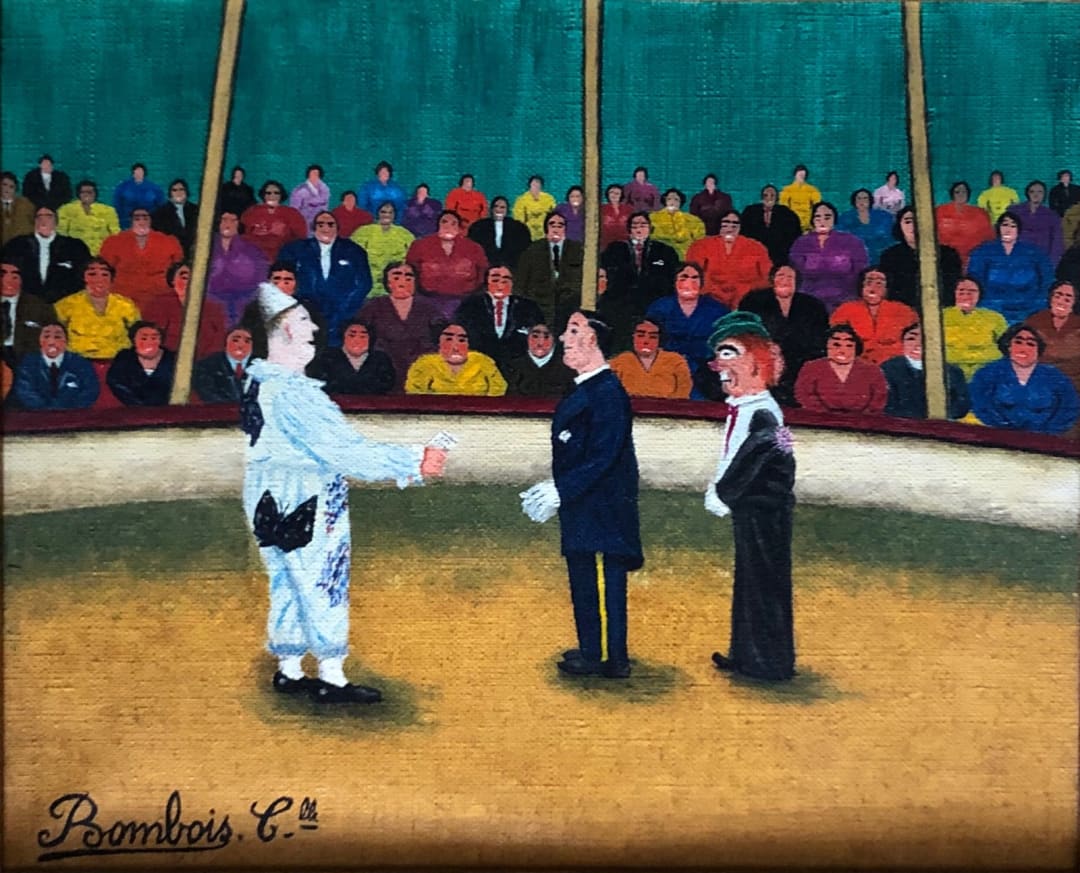Camille Bombois (1883–1970) was a French self-taught painter renowned for his vivid, imaginative works that celebrated everyday life and rural scenes, earning him a place as one of the premier figures of Naïve art. Born in Venarey-les-Laumes, France, Bombois came from humble beginnings, spending much of his youth as a farm laborer and wrestler. His physical strength supported him through years of demanding manual labor, but his passion for art persisted in his spare time.
In 1907, Bombois moved to Paris, where he worked as a night watchman and began painting more seriously during the day. Influenced by his rural upbringing and the bustling life of the city, his paintings often depicted joyful carnival scenes, landscapes, and portraits imbued with an enchanting, dreamlike quality. Despite his lack of formal training, Bombois displayed a remarkable command of composition, perspective, and color, using bold hues and meticulous detail to create works that balanced realism with a sense of whimsy.
Bombois' breakthrough came in the 1920s when his paintings were discovered by Wilhelm Uhde, a prominent art dealer and advocate for Naïve artists. His work was subsequently exhibited alongside luminaries like Henri Rousseau and Séraphine Louis, gaining recognition for its originality and sincerity.
Bombois' art captures the simplicity and vibrancy of life, often celebrating the resilience and joy of ordinary people. His unique ability to blend a naïve aesthetic with technical sophistication has earned him lasting acclaim. Today, Bombois is celebrated as a key figure in the Naïve art movement, with works displayed in major collections worldwide, including the Musée Maillol in Paris and the Museum of Modern Art in New York.
